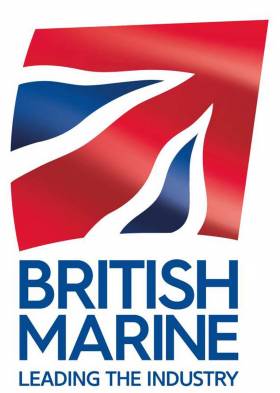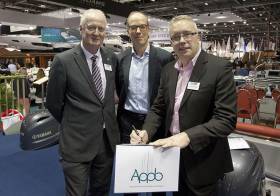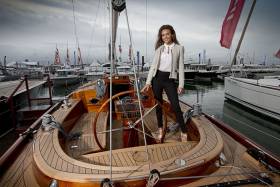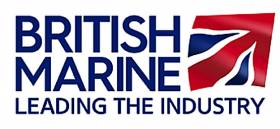Displaying items by tag: British marine
British Government Launches 'Maritime 2050' to Aid €40bn Marine Industry
Today (Thursday 24 January 2019) marks an 'historic' moment say industry chiefs for Britain’s marine industry with the launch of Maritime 2050, the UK Government’s first ever long-term strategy to support and grow the sector.
Ironically, the announcement comes when the bulk of the British Marine industry is in Germany at the massive Boot Dusselfdorf exhbibition following the collapse of its own London Boat Show that was cancelled due to lack of interest this month.
Described as both visionary and aspirational, Maritime 2050 highlights the Government’s recognition of the importance of maritime – worth over £40bn to the UK economy, more than aerospace or car manufacturing – and focuses on the desire to cement the UK’s place as the world's leading maritime nation into the second half of the 21st century.
"Maritime 2050 highlights the Government’s recognition of the importance of maritime – worth over £40bn to the UK economy"
Over the last year, British Marine and its maritime counterpart, Maritime UK, has been collaborating closely with government officials to develop this ground-breaking strategy, ensuring it fully addresses the key challenges facing the marine industry.
This one-of-a-kind piece of work incorporates the full footprint of British Marine’s membership, from manufacturing and services to tourism, setting out a comprehensive roadmap to drive growth for member businesses.
At the bedrock of Maritime 2050 are seven distinct themes; Technology, Trade, Environment, People & Skills, Infrastructure, Security/Resilience and the UK’s Competitive Advantage. Combined, these deliver a clear direction and vision for the Government and industry to work together to ensure the UK can progressively compete on the global stage in the coming decades. For example:
Infrastructure
The Government has committed to work with British Marine and its members to identify, develop and deliver tangible support for the leisure marine, superyacht and small commercial marine industry. This includes looking at the protection of strategic waterfront sites so that the sector has the scope to expand businesses and increase output.
It has also pledged to review any issues which might prevent UK businesses from being competitive in bids for UK-based contracts and if necessary, explore options to provide appropriate support.
People & Skills
The Government will fund the roll out of the ‘people like me’ maritime industry project to help address the image and perception of the industry. Its aim is to promote careers in the industry and ultimately, close the critical skills gap which 30% of marine companies have reported within their businesses.
In addition, officials aim to establish a Maritime Skills Commission, bringing existing leading marine skills experts together to report on the current and future skills needs of the industry. It will inform and improve the maritime training curriculum to ensure it is up-to-date and maintains relevance amid the evolving needs of the sector.
Environment
To help business meet the ever increasing need to reduce their environmental footprint, both domestically and internationally, the Government will assess how economic instruments could support the transition to zero emission shipping in the medium to long term. This coincides with British Marine’s continued work with members, regulators and navigation authorities to educate all parties on environmental issues and develop affordable and practical steps businesses can implement to reduce their impact on the planet.
Trade
The Government will collaborate closely with industry to increase British exports as a proportion of the UK’s GDP from 30% to 35%. This follows its advancing work with British Marine and other sector bodies to develop a fully funded five-year export strategy that boosts marine exports in existing and new markets.
British Marine’s President, Greg Munford, today joined the Secretary of State for Transport, Rt Hon Chris Grayling MP, and Maritime Minister, Nusrat Ghani MP, along with other senior figures from maritime and a number of marine apprentices, onboard City Cruises’ Millennium Diamond for the launch of the Maritime 2050 strategy.
Greg Munford commented: “British Marine welcomes and supports the Government’s ambitious Maritime 2050 strategy, which makes important recommendations to support and grow the UK’s marine industry.
“We appreciate the hard work done by the officials at the Department for Transport over the past year to better engage with the industry and understand the challenges and opportunities facing our member businesses. We look forward to working alongside our Department for Transport colleagues to implement the commitments set out in Maritime 2050.
“With a key element of the strategy focussed on growing skills and career opportunities across marine and maritime, I am delighted that British Marine members, City Cruises and Berthon, have been able to bring some of their apprentices along today to help showcase the talent already present in our industry.”
Matthew Beckwith, City Cruises’ Operations Director and Chairman of the British Marine Passenger Boat Association added: “We support the Government’s ambitious Maritime 2050 strategy and look forward to working together with all of our strategic partners to continue to promote the UK’s vital waterways for both transport and leisure.
“In particular we are delighted to see a commitment from this Government to tackle the skills deficit across the industry and to support the growth of the tourism sector which makes such a valuable contribution to our visitor economy.”
Further information about Maritime 2050, click here
British Marine at Boot Düsseldorf 2019
British Marine has reported an increased level of interest from UK businesses looking to exhibit on its prominent Showcase stand at boot Düsseldorf 2019 with space selling out in record time and a waiting list of companies who missed out on securing space.
In total, 88% of the companies on the British Marine Showcase stand are first-time exhibitors whilst across the whole of boot Düsseldorf 2019, over 45% of British exhibitors are new to the Show.
British Marine has already outlined plans to expand its Showcase stand in 2020 to meet significant growth in demand and is in discussions with event organisers about other exciting future opportunities for UK companies interested in exhibiting at the event.
Located in Hall 11, British Marine’s Showcase stand (Stand 11 H.75) has become a prime destination for international boaters looking for the latest in British innovation and high-quality services and is the ideal platform for brands looking to enter the European market. Members on the Showcase stand this year will include Clearwater Rating Ltd, Kingfisher Yacht Ropes, Farécla Products Limited, Iris Innovations Limited, PRP Optoelectronics Ltd, Seaglaze Group, Seasmart Marine Limited and the Chelsea Magazine Company, as well as a returning exhibitor, BHG Marine Ltd.
In total, many British brands will be among the thousand-plus exhibitors at the world’s largest watersports show which attracts over 250,000 visitors from 90 countries.
In addition, British Marine will be hosting ‘Brits@Boot’ at the Show, a new networking reception supported by the Department for International Trade (Germany). Taking place on Tuesday 22 January between 4:30pm-6:00 pm at the British Marine Showcase stand, UK marine business and international buyers and distributors are invited to join together to talk business. During the event, the British Marine team and Department for International Trade advisors from the British Embassy in Berlin will be available for invaluable one-to-one discussions.
Lesley Robinson, Chief Executive Officer at British Marine, commented: “With the thriving international boating market, it is great to see so many home-grown brands eager to exploit the sales platform boot Düsseldorf offers to grow exports and showcase British craftsmanship and expertise at this time of year.
“As the leading trade association for the UK industry, we look forward to welcoming an array of visitors across the nine days to our popular Showcase stand and are working with organisers to develop additional opportunities for members at future events.”
Boutique Boat Trade Event Gets A Rebrand As ‘London Yacht Show’
#TradeNews - Organisers of prestigious yacht shows in Florida and Monaco have taken over the boutique London On-Water Boat Show and are set to relaunch the brand next May as the London Yacht Show.
As Motor Boat & Yachting reports, Informa Exhibitions will return to the St Katherine Docks venue that has hosted the event for the last five years — with Fairline, Princess and Sunseeker among planned exhibitors from 9-12 May (dates to be confirmed).
And the new show-runners have the backing of Southampton Boat Show organisers British Marine whose own London Boat Show, originally scheduled for next month at the city’s ExCeL, was cancelled over the summer due to “insufficient support”.
Informa promises to retain the boutique nature of the St Katherine Dock event. “We’re not looking to compete with the Southampton Boat Show, this will be a focussed event aimed at the luxury end of the market,” said Andrew Williams, president of maritime for Informa Exhibitions.
Motor Boat & Yachting has much more on the story HERE.
British Marine Appoints Lesley Robinson as CEO
British Marine has announced that Ms Lesley Robinson has been appointed as CEO and will take up the position on 16 July 2018.
Lesley is a high calibre, proven, Chief Executive with both UK and international experience in numerous public, non-marine as well as leisure marine sectors. She is a qualified accountant, with financial, commercial and general management roles to her credit.
Her early career has included executive positions of Managing Director, COO and Finance Director of numerous companies as well as various Non-Exec Director roles, with an extensive range of business and commercial acumen.
Greg Munford, Acting President at British Marine, said: “I am delighted that British Marine has managed to attract a proven senior executive to the post of CEO. I am looking forward to working with Lesley and the Non-Executive Board during the next 12 months as President.”
David Pougher, Interim Managing Director at British Marine, added: “Lesley has the varied and extensive skill set that is needed to lead and guide British Marine forward through its continued navigation of change. I am extremely pleased that we were able to act swiftly in identifying what is required and to appoint someone who can clearly illustrate their capabilities through previous, successful roles. I am also confident that she has what is required and will deliver the drive, commitment and passion to take British Marine further in offering unique and fulfilling solutions, support and satisfaction for our members, staff and partners.”
Lesley, upon her appointment, stated: “I am excited to be taking on this new role and look forward to working for and with British Marine members to help secure a healthy future for our marine industry.”
Full Steam Ahead for Anglo-French Agreement to Boost Marine Tourism
An agreement has been made between the UK’s South West and Northern French marine businesses in a bid to boost maritime tourism amid the uncertainties surrounding Brexit.
British Marine South West (BMSW), which represents 200 marine members in the region, and the Association des Ports de Plaisance de Bretagne (APPB), which represents 70 marinas and ports in Northern France, signed the Memorandum of Understanding at the London Boat Show on Thursday 12th January.
The initiative encourages the sharing of relevant information, maritime culture and maritime tourism between the two areas at a time of significant change.
Jonathan Fielding, Chairman of BMSW, said: “This agreement enables both regions to work closely on minimising the negative aspects of Brexit. Together we can encourage boat owners to travel between the UK’s South West region, Northern France and the Channel Islands regardless of the final outcome of Brexit. This new relationship will powerfully promote what we know to be the finest cruising ground in Northern Europe.”
The project aims to develop a common framework for the sustainable growth of the nautical sector in the two regions before and after Brexit. It will also enable British and French marina members to work together to share best practices and to encourage growth and future investment.
Brieuc Morin, General Secretary of the APPB said: “Our new relationship will enable us to further promote tourism in both regions. We are committed to making Channel crossings as easy as possible by initiatives such as sharing more information about marinas and hope to see a significant increase in numbers of boats travelling for leisure between Northern France and the UK’s South West.”
The project has already started with a research survey of boat owners’ requirements being conducted by students from Université de Bretagne Sud in both the UK and France. The results of this survey will assist in the formation of further specific objectives and form the basis of data for grant funding.
British Marine South West (BMSW): BMSW represents 200 members in Devon, Cornwall, the Channel Islands, Somerset and Bristol. BMSW is the largest British Marine region by turnover representing over 32% of UK leisure marine turnover and employing nearly 10,000 full time equivalent employees. Association des Ports de Plaisance de Bretagne (APPB): APPB represents 70 marinas and ports across Brittany, including one in Normandy and seven in Loire-Atlantique.
Future Marine Workforce Celebrated at UK's Southampton Boat Show
Fifty eight young people have been honoured yesterday by British Marine, the membership organisation for the UK leisure, superyacht and small commercial marine industry, at its annual Graduation Ceremony at the 2016 Southampton Boat Show.
Now in its sixth year, the event celebrates a selection of graduating apprentices from all areas of the industry, in roles varying from marine engineers to shipwrights and joiners; recognising the diversity of skills and careers in the sector. Apprentices from eight member companies were recognised, from Berthon Boat Company, BHG Marine, Cooney Marine, RNLI, Seadub, Spinlock, Sunseeker International, Pendennis Shipyard and Princess Yachts.
The marine industry has over 470 apprentices across 100 businesses, with three quarters of apprenticeships in manufacturing and engineering, according to a new report* released at the Show yesterday.
Apprenticeships are important within the marine industry as an inability to recruit skilled workers is holding back business growth, according to the new report. 30% of companies have identified critical skills gap, with technical skills the biggest obstacle to recruitment. British Marine is working with its members to tackle the skills gap, turning to apprenticeships as well as providing a range of training and development opportunities for existing staff.
Sarah Dhanda, Director of Membership & Services at British Marine, said: “We are delighted to honour these 63 young people at our Graduation Ceremony. They are the workforce of the future and it is wonderful to be able to recognise their hard work and dedication. British Marine has been working with companies to support marine apprentices for a number of years to ensure that the industry, bringing £3.6 billion worth of turnover to the UK economy, addresses the skills gaps and continues to thrive.”
The Royal Navy’s Deputy Chief of Staff Engineering Support, Captain Matt Bolton, who presented the awards alongside Libby Greenhalgh of the Magenta Project, added: “A career in the marine industry offers a wide range of opportunities and an apprenticeship is an invaluable way to enter the sector. Thirty five years ago I started off my career as an apprentice and today I still draw on the knowledge and skills I learnt at the time. It is exciting to see so many young people taking on the oceans of opportunity within the industry.”
Britain's Boatbuilders Hiring But Face Significant Skills Gap
British Marine Industry leaders are calling for the sector to be core part of the UK Government’s Industrial Strategy. The announcement comes as Southampton Boat Show is underway and attracting significant numbers for the annual industry south coast celebration. The majority of work force growth has come from the boat manufacturing (20%), equipment supply chain (20%), and boat distribution and retail (15%) sectors. The industry’s 4,500 businesses now employ 31,600 people.
New statistics released at Southampton Boat Show today, however, show that an inability to recruit skilled workers is holding back growth:
· 30% of companies have identified critical skills gaps that are holding their business back
· Technical skills are the biggest obstacle to recruitment: 74% of businesses cited a lack of technical training (such as in manufacturing and engineering) as a barrier. This compares to the UK wide average of 41%.
o For an industry where one in two jobs are in boat building and repairs and equipment manufacturing (34% and 13% respectively) the need to plug the skills gap is becoming more important for future growth.
· Soft skills are a concern: 24% of businesses identified a lack of soft skills as a barrier to finding the right candidates. This has led to a big push in soft skills training.
· Competition from other sectors is also a factor: one in three (32%) of businesses said that competition from other industries affects their ability to recruit. This compares to the national average of 8%.
Commenting, Howard Pridding, Chief Executive of British Marine said:
“The marine industry is dynamic and growing. We offer variety, good pay and opportunities to work at some world leading companies. Businesses want to take on more staff but a lack of relevant skills is a barrier and while many of our members are taking on the challenge themselves, more can be done by Government to back the industry. We welcome the renewed emphasis on an industrial strategy but it is crucial that the marine sector forms a central part of any plan and is given the support it needs.”
SMEs and start-ups drive the industry, but need talent to thrive
83% of companies in the sector are either small businesses with turnover between £200,000 and £999,999 (26%) or micro businesses (57%) with turnover up to £199,999. Moreover, the UK marine industry is a haven for start-ups with over 50 new businesses registered in the last year. If these companies are to grow further, they need access to a suitably skilled workforce.
Mathew Hornsby, Co-founder and Sales Director at Williams Jet Tenders, who are exhibiting at the Southampton Boat Show this week, commented: “We are seeing demand for British boats from all over the world, particularly in the USA. We are growing and we want to hire more people to meet this demand, but a lack of specialist manufacturing skills in the market is a future challenge for the industry.
“We’ve increased our workforce by 15% in the last twelve months with full-time employees and apprentices. However, the pool of talent isn’t infinite. We’re making a big push to expand the training opportunities we offer and engage with the next generation of our workforce. The marine industry is an important contributor to the economy and part of our country’s heritage - we should be supported more by Government.”
Mathew goes on to explain: “We’ve set up our own apprenticeship scheme, taking 14-15 year olds in our local community and running a Saturday morning boatbuilding school. If successful, the youngsters progress on to a full-time apprenticeship position with Williams Jet Tenders.”
Filling the gap
Across the industry, businesses are taking on the skills gap by themselves, turning to apprenticeships or training-up people in house, rather than relying on a flow of talent from other markets or their competitors.
Apprenticeships
· The marine industry has 470 apprentices across 100 businesses.
· Princess Yachts, one of Britain’s largest yacht manufacturer, employs 91 apprentices.
· Three quarters of apprenticeships are in manufacturing and engineering (43% boat manufacturing, 21% repairs and servicing, 8% equipment manufacturing).
· 11% of apprentices are employed by the tourism sector.
Training and development
· Over half of businesses that employ more than 10 people provide comprehensive training.
· Technical and regulatory training dominates, accounting for almost 80% of internal training provision.
· Improving soft skills is a priority: training in soft skills accounts for 37% of internal training and 27% of external training.
British Marine has today (3 August 2016) released important new research exploring the profile, behaviour and purchasing dynamics of UK boating enthusiasts and boat owners. It covers recreational boating and watersports from both private owned and hire/charter across inland and coastal waters.
Following on from the publication of the annual Watersports Participation Survey¹ earlier this year, the Boaters and Boat Owners Survey², sponsored by Navigators & General and MDL Marinas, acts as an important benchmark to analyse and formulate future developments in the marine industry.
From the key influencers on participation to how people finance a new boat, this research examines a range of aspects to better understand the modern landscape of boating in the UK and offers an insight which is not currently available to UK marine businesses. Some key findings include:
Importance of a boating community and generational learning
Whilst the perceived cost of boating is historically considered a barrier for non-boaters, it appears that a lack of access and involvement in a community geared towards boating and not engaging with it as a child, all have an equally detrimental impact on participation.
When surveyed, nearly 60% of non-boaters listed not knowing anyone who owns a boat as a reason for not participating, whilst 22.2% said they wouldn’t know where to start and 29.6% put it down to not taking part in boating as a child. This is relative to the 48.2% of non-participants who listed cost as a reason for their inactivity.
Lifetime progression between on-the-water activities
With 42.7% of boaters swapping to a different on-water activity rather than giving up boating and watersports, two clear patterns of movement between activities have emerged.
As part of their natural progression as a boater, participants are upscaling their form of activity. For example, a large portion of past participants of small sailboat activities and racing (30.4% and 34.2% respectively) now consider sail yacht cruising as their main boating activity.
In comparison, a number of boaters are moving to activities that are more manageable with their lifestyles. The research shows that a notable 48.9% of watersports enthusiasts and 25.9% of canal boaters surveyed were previously sail yacht cruising participants. This is due to families converting to the flexibility of canoeing and rowing and older yachters switching to less physical motor boat activities.
The popularity of formal qualifications
The majority of boaters (55.7% of boaters) learn through formal qualifications, many on hire and charter holidays, which are an important avenue to long-term participation.
In addition, formal training appears to remain a continual aspect of the boating lifestyle with a significant portion of participants (23.7%) undertaking further training for personal development or to benchmark their skill level.
Boat owned vs. main boating activity
The activity profile of boaters doesn’t automatically reflect the type of boat they own. For example, one in 10 dinghy owners consider yacht cruising as their main activity, whilst one in five narrowboat owners reported sail yacht cruising or motor boating/cruising as their main activity.
For some boating enthusiasts, the financial flexibility and diversity of craft and locations offered by the hire and charter sector provides a compelling alternative to owning their own vessel, with 45.1% of non-boat owners surveyed previously hiring or chartering of a boat.
Pension freedoms show little effect on purchasing behaviour
Despite new pension freedoms introduced in the 2015/16 financial year, out of the people who have chosen to purchase a new or used boat, very few (approximately 1.5% of new boat owners surveyed) have opted to use tax-free pension withdrawals to fund the sale. Instead, 86.6% of consumers have used savings as the primary means of funding a purchase.
Commenting on the survey, Howard Pridding, Chief Executive of British Marine, remarks: “This in-depth research further cements British Marine’s position as a market research leader by providing a unique, in-depth insight into today’s consumers for marine businesses across the industry to use.
“By highlighting the importance of generational learning and outlining the key influencers and concerns of prospective boaters and boat owners, this study provides a platform for British Marine to develop a new strategy to increase boating participation in the UK.”
Paul Emery, Head of Navigators & General, adds: “Truly understanding our customers is key to ensuring that Navigators & General’s insurance products and services continue to improve over time to be the best that we can offer. This new research does just that, exploring in detail how people from all walks of life care for and use their boats.
“It’s great to work with British Marine to finally see a uniquely in-depth piece of research which will not only encourage boat users to enjoy their crafts but also allows Navigators & General to ensure they have the right insurance cover and support should the worst happen.”
Dean Smith, Operations and Marketing Director at MDL Marinas, comments: “This is valuable research that gives much needed customer insight. As a business our priority is delivering an exceptional marina experience to our current and future customers. Data such as this helps inform our decisions and allows us to focus on understanding our customers’ evolving needs. It’s important that we as an industry have access to quality research like this and that we track and respond to it.”
Pougher Takes Over As British Marine President
UK Marine industry figure David Pougher takes over the well respected role of British Marine President from Fiona Pankhurst who has held the position since 2014.
During her time as President, Fiona led the organisation forward and was instrumental in seeing British Marine unveil a strong new identity that stands out within the context of modern brands in the marine sector. The brand, launched last year, was the result of a year-long exercise which was undertaken in-house and overseen by Fiona and the British Marine Management Board. It strongly connects the organisation’s members with Britain’s reputation for quality, excellent design and innovation, giving British Marine the opportunity to really promote what is great about the British marine industry. As immediate Past President, Fiona remains on the management board of British Marine, enabling continuity of the strength of purpose she has helped to build.
Incoming President, David, has been involved in the UK marine industry for over 35 years, retiring from his position at Yamaha as Divisional Manager, Marine and All Terrain Business in 2013. David then set-up Deep Consultancy, a marine business consultancy specialising in SME’s and maintaining a business interest in Yamarin Boats from Finland, Selva Marine/Marlin RIBS from Italy and the PWP (Personal Watercraft Partnership). He has had extensive involvement with British Marine over the years, as a British Marine member and also through a number of British Marine groups and committees such as the British Marine Engines & Equipment Association, the Boating Environment & Facilities Committee, the British Marine Boat Shows Board and the British Marine Management Board.
On taking over from Fiona, David commented: “It is an honour to become the next President of British Marine. The organisation provides members with invaluable support, opportunities and benefits to help grow their businesses and it does a great job in raising the profile of the UK marine industry. My fellow British Marine members and the team at Marine House have my commitment, focus and drive to assist, support and protect over the next two years.
“I look forward to this position and challenge and it’s my intention, during the next six months, to visit every region, every British Marine association and as many committees and individual members as possible. I look forward to working with our members, our Management Board, the British Marine Boat Shows team and all the staff, for the good of our industry.”
Howard Pridding, British Marine Chief Executive, commented: “Firstly I would like to take this opportunity to thank Fiona for her commitment to British Marine during her time as our President and her enthusiasm in undertaking all of her British Marine duties. The successes she has helped to achieve will drive the industry forward. I am delighted to welcome David as the new President and am looking forward to working with him and the new Vice-Presidents, Alice Driscoll and Anthony Trafford, to continue to raise the profile of the British marine industry both at home and overseas.”
British Marine Celebrates National Apprenticeship Week
British Marine launches its exciting new campaign today to help raise the profile of the varied and rewarding career opportunities within the marine industry. Designed to increase the number of young adults choosing careers within the sector, particularly amongst those aged between 10 and 21 years of age, British Marine has developed a toolkit to inspire the workforce of tomorrow.
Amanda Simpson, Training Manager for British Marine, comments: “There is a variety of truly fantastic career opportunities within the marine industry that we want to ensure are highlighted to young students starting out their working life and our new 12-month campaign is a great way to celebrate these. We want to appeal to the marine engineers, designers, marine carpenters, berthing masters and on-water instructors of tomorrow to consider a rewarding career in our industry.”
To tie in with the launch of the new campaign, British Marine has run a poll amongst 2,000 adults1 already in employment. Results show that the opportunity to work outdoors (17%), do something unusual (31%) and make a physical product (22%) are the qualities that make for the happiest workers.
Amanda continues: “Unfortunately, new research shows many are unhappy in their choice of career, with 9.1 million2 saying they’re in the wrong career and 2.7 million2 saying they aren’t happy in their job. Only one in ten surveyed said they had all the things which make for a satisfying career. There is a real opportunity to highlight the range of highly fulfilling and valuable careers that are on offer within our thriving industry.”
The careers toolkit developed by British Marine to be rolled out over the coming 12-months includes:
- A film aimed at 16 to 21 year olds, focussing on the question, “Where do your skills fit in?” View it here: www.britishmarine.co.uk/careers
- A film aimed at 10 to 15 year olds, built around the question asked by many children, “What do you want to be when you grow up?”
- Marine job cards, a pack of brightly coloured cards in ‘Top Trumps’ style, illustrating the variety of jobs available in the marine industry. Aimed at young children, these cards will be issued to careers advisors and teachers as a way of starting to talk to pupils about the options available to them in the marine industry.
- A brand new careers section of the British Marine website, offering a wealth of information for young adults considering apprenticeships and their career options.
Amanda concludes: “This informative and highly engaging toolkit will allow the industry to connect with those looking at starting out their working careers, as well as those guiding them in their decisions.”







































































